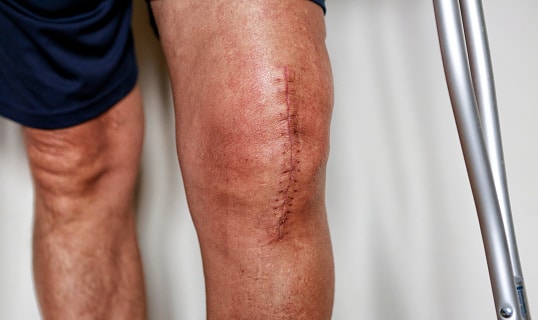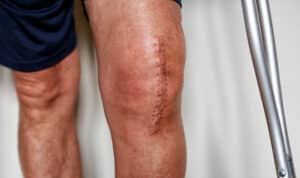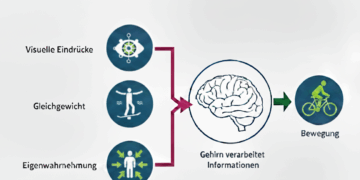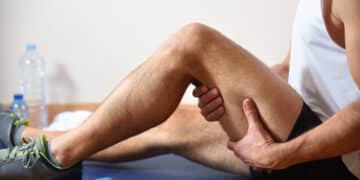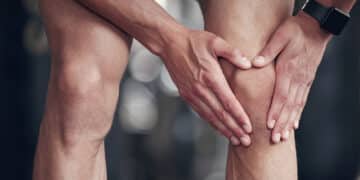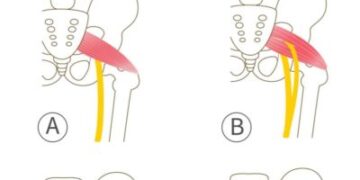The process of wound healing and the phases of recovery
Have you ever wondered how our body miraculously heals injuries such as muscle tears, torn muscle fibers or muscle strains? With Physiotherapy Waidfuss in Höngg, we would like to give you a sensitive insight into the fascinating process of wound healing. In this article, we explain the key stages of wound healing and why patience and proper care are so important. Whether you are affected yourself or want to support someone else, this information should help you better understand the path to full recovery. And if you need further support, you are welcome to book an appointment with us.
Wound healing phases for injuries
Wound healing phases
Phase 1: The inflammation phase (3-5 days)
When an injury occurs, such as a muscle tear or a torn muscle fiber, the body starts the inflammation phase almost immediately. During this phase, the tissue repairs the damage caused by the bleeding. Signs of inflammation include redness, swelling, warmth, restricted movement and pain. These reactions are completely normal and a sign that the body is working on healing. Lymphocytes and granulocytes migrate to the site of injury and begin to remove dead tissue and pathogens.
It is particularly important to ensure rest during this phase. Excessive stress and the careless use of anti-inflammatory medication can disrupt the natural inflammatory process and delay healing. Medication, if not used responsibly, can suppress inflammation and thus impair wound healing. Your pain is a signal from the body that should be heeded to promote optimal healing. Edema and tension in the connective tissue can also occur and require special attention.
Phase 2: The proliferation phase (up to 28 days)
After the inflammation phase, the body produces new tissue elements in the proliferation phase, which are necessary for healing. This is crucial for injuries such as muscle tears, torn muscle fibers and muscle strains. Fibroblasts migrate to the injury site and start producing type III collagen, which is later converted into more robust type I collagen.
During this phase, specific stimuli and early functional treatments are crucial. Particularly in the first four weeks, appropriate treatments such as targeted stretching should be continued to ensure adequate fiber alignment. The duration of this phase varies for different tissue types: ligaments require around three weeks, muscles around four weeks, bones up to six weeks and tendons between one and three months for significant healing.
Phase 3: The remodulation phase (up to 500 days)
The final phase, the remodulation phase, can last up to 500 days. Here, the previously produced collagen is further restructured and aligned to restore the normal function and strength of the tissue. If functional stress is applied during the proliferation phase, the collagen fibers orient themselves correctly in the functional plane. However, if there is no stressful impact, collagen does not build up adequately and the tissue remains more susceptible to new injuries.
The tissue can only be expected to be fully resilient once this phase has been completed. Too early loading can lead to a prolongation of the inflammatory phase, increased collagen deposition and ultimately to crystallization and ossification. Stress and hormonal dysregulation such as adrenaline/noradrenaline release can also impair the healing process.
It is important to respect these phases and, particularly in the case of muscle tears, muscle fibre tears, muscle strains or bursitis, to recognize that the healing process often takes longer than with a bone fracture. The ability to move and function is promoted not only by the right timing, but also by targeted intervention at every stage of wound healing.
Patience and thoughtfulness are the key to healing
Injuries such as muscle tears, muscle fiber tears or muscle strains are often associated with a lengthy healing process. While it can be difficult to be patient, it is essential to guide the body through the various phases of wound healing and give it the space it needs to regenerate. Edema, tension in the connective tissue and other complications are normal, but can be managed effectively with rest, appropriate therapeutic measures and careful reintegration into physical activities.
We hope that this overview has provided you with more clarity about the healing process after an injury. If you have any further questions or specific concerns, please do not hesitate to contact us at Physiotherapy Waidfuss in Höngg. Your health and recovery are our priority, and you are welcome to schedule a Book an appointment with us.
Categories
- Osteoarthritis
- Leg
- Extensions
- Dry needling
- Elbow
- Foot
- Balance
- Hand
- Hip
- Pine
- Knee
- Headache
- Lymphatic drainage
- Mobilization
- Muscle pain
- Myofascial therapy
- Neck pain
- Physiotherapy Höngg
- Physiotherapy Wipkingen
- Physiotherapy Zurich
- Rehabilitation
- Back pain
- Shoulder arm
- Shoulder pain
- Pregnancy
- Dizziness
- Sports
- Trigger points
- Exercises
- Lower leg
- Injury prevention
- Wade
- What to do?
- Wound healing
Neuro-focused training in physiotherapy
What is neuroathletic training (NAT)? Neuroathletic training (NAT) is a modern and holistic therapeutic approach...
Read moreAfter the cruciate ligament rupture: The way back to sport in Zurich
Your way back to sport after a cruciate ligament rupture A wrong step, an abrupt turn, a cracking sound...
Read morePhysiotherapy for seniors Zurich Wipkingen
Movement is life - even at 60+ Growing older brings with it many positive aspects: more time for family and...
Read moreKnee injury after accident what to do?
After the accident: How physiotherapy helps with knee and leg injuries in Zurich Wipkingen The way back to full fitness is...
Read moreLymphoedema of the legs
Lymphatic drainage for lymphoedema of the legs: causes, symptoms, treatment and the five most important self-help tips Lymphoedema...
Read moreHamstrings injuries
Hamstring injuries: Prevention, symptoms and rehabilitation of hamstring injuries The hamstrings - also...
Read moreStretching program
Your stretching program Stretching is an essential foundation for your mobility and well-being....
Read moreBursitis of the knee: causes, symptoms and treatment options
What is inflammation of the bursa (bursitis) in the knee? An inflammation of the bursa, also known as bursitis, is a...
Read moreHip joint arthrosis
Osteoarthritis of the hip joint - causes, symptoms and treatment options Osteoarthritis of the hip joint, known as coxarthrosis,...
Read morePatella tip syndrome
Patellar tendinopathy: Pain in the knee - Effective treatment at Physiotherapie Waidfuss Patellar tendinopathy is a...
Read morePatience after injuries
Please be patient and do targeted training after injuries If you have sustained an injury, please...
Read moreWorkplace ergonomics - Do you work at a computer?
Ergonomics at the workplace: Effective measures to combat back pain and neck tension You're probably familiar with...
Read moreTennis elbow or golfer's elbow? Causes, symptoms and treatment
Tennis elbow can severely restrict your mobility and cause unpleasant pain in the elbow. This...
Read moreNeck pain - holistic therapy with trigger point therapy and active exercises.
Neck pain? Get active and free yourself! Do you know the feeling of waking up in the morning and feeling like a robot?
Read moreShoulder pain: causes, treatment, exercises
What is shoulder pain and how does it develop? Shoulder pain is one of the most common complaints of the musculoskeletal system...
Read moreBack pain: understanding and solutions
Back pain: can have many causes Back pain is one of the most common complaints that affect people....
Read moreWound healing phases
Have you ever wondered how our bodies miraculously repair injuries such as muscle tears, torn muscle fibers and...
Read moreKnee pain - why it occurs and how you can relieve it
Everything you need to know about knee pain: Causes and treatment options Knee pain is a common...
Read moreAnkle sprain - causes, treatment & tips for recovery
The way back to sport after an ankle sprain Whether during an intensive game of basketball, jogging on uneven ground or...
Read morePiriformis syndrome - What helps against pain in the buttocks?
Piriformis syndrome and lumbago at a glance What is piriformis syndrome? Piriformis syndrome is a...
Read more
